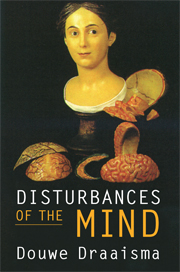Debbie Balkaran writes on Charles Bonnet and the syndrome that bears his name
 “His mind makes merry with the images. His brain is a theatre where the state machinery puts on performances which are all the more amazing because they are unexpected.” – Charles Bonnet
“His mind makes merry with the images. His brain is a theatre where the state machinery puts on performances which are all the more amazing because they are unexpected.” – Charles Bonnet
The first documented case of Bonnet’s syndrome involved a 90 year old man with poor eyesight. As the days darkened, he began to see visions: thirty foot carriages, imaginary visitors, women with boxes on their heads, and dancing butterflies. Although the images are not disturbing and certainly non-threatening, even today doctors seek out explanations for these images that are all too pleasant but rather confusing for those who suffer from Bonnet’s syndrome.
There never was and still is no formal agreement by the medical community about the inclusion and exclusion criteria for Bonnet’s syndrome.
The name Bonnet has become associated with a syndrome, but few remember the namesake Swiss naturalist and philosopher Charles Bonnet. Because of his inability to see clear and defined images could not continue with microscopic research. During his lifetime, the Geneva aristocrat would be known as a botanist, psychologist, and finally a metaphysicist (Bonnet’s 900-page Meditations sur l’Univers remains unpublished). It was his work in psychology; however that would immortalize Bonnet’s name in the world of medicine. While he is credited for discovering the syndrome, like so many others, he would not live to experience the fame that it would eventually bring him.
The history of Bonnet’s syndrome is like traversing down a long winding path and not knowing what is actually at the end of it. There never was and still is no formal agreement by the medical community about the inclusion and exclusion criteria for Bonnet’s syndrome. Due to the advances that would come later in neurology Bonnet himself could not hope to fully understand the syndrome in its entirety in 1760. A score of practitioners, from mathematicians and philosophers to psychologists and neurologists tried to explain Bonnet’s syndrome, none of which did so successfully except for one man, Geneva neurologist De Morsier. Unlike his peers, De Morsier had decided on the inclusion and exclusion criteria that would be used to diagnose Bonnet’s syndrome in 1936. Using this criterion, De Morsier named these “psychological phenomenons,” as Bonnet had once called the visions both he and his grandfather saw, Bonnet’s Syndrome.
Three centuries later and practitioners in the healthcare industry still do not agree on the exact spot on the trajectory between eye and brain where Bonnet images originate. What we do know about Bonnet’s syndrome is that age and diminished vision are two crucial factors which doctors seriously consider when diagnosing patients. There are also similarities with the images that are seen by the geriatric population who have Bonnet’s syndrome. For example:
 While there is no exact science to diagnosing Bonnet’s syndrome, there is still hope for at least a modicum of understanding this peculiar disorder. Current research on the brain promises to demystify Bonnet’s syndrome by examining V19 (part of the visual association cortex in the brain) as well as comparing activation levels in the brain of introverts to extroverts. Thus, Bonnet sufferers, loved ones, and care-givers should all possess a good dose of optimism for understanding the syndrome fully.
While there is no exact science to diagnosing Bonnet’s syndrome, there is still hope for at least a modicum of understanding this peculiar disorder. Current research on the brain promises to demystify Bonnet’s syndrome by examining V19 (part of the visual association cortex in the brain) as well as comparing activation levels in the brain of introverts to extroverts. Thus, Bonnet sufferers, loved ones, and care-givers should all possess a good dose of optimism for understanding the syndrome fully.
For more on Charles Bonnet, and many other doctors who gave their names to famous psychiatric disorders, check out Disturbances of the Mind, coming this Fall.
Latest Comments
Have your say!